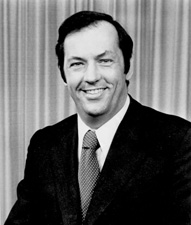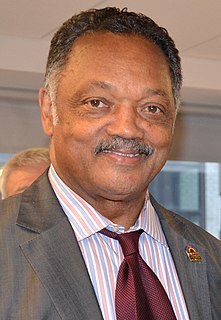
The 1996 United States presidential election was the 53rd quadrennial presidential election. It was held on Tuesday, November 5, 1996. Incumbent Democratic President Bill Clinton defeated former Senate Majority Leader Bob Dole, the Republican nominee, and Ross Perot, the Reform Party nominee.
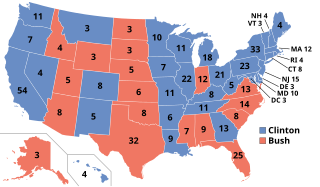
The 1992 United States presidential election was the 52nd quadrennial presidential election. It was held on Tuesday, November 3, 1992. Democratic Governor Bill Clinton of Arkansas defeated incumbent Republican President George H. W. Bush, independent businessman Ross Perot of Texas, and a number of minor candidates.

The 1992 Democratic presidential primaries were the selection process by which voters of the Democratic Party chose its nominee for President of the United States in the 1992 U.S. presidential election. Arkansas Governor Bill Clinton was selected as the nominee through a series of primary elections and caucuses culminating in the 1992 Democratic National Convention held from July 13 to July 16, 1992, in New York City.

The 1992 presidential campaign of Bill Clinton, then Governor of Arkansas, was announced on October 3, 1991 in Little Rock, Arkansas. After winning a majority of delegates in the Democratic primaries of 1992, the campaign announced that then-junior Senator from Tennessee, Al Gore, would be Clinton's running mate. The Clinton-Gore ticket went on to defeat Republican incumbent President George H. W. Bush and Vice President Dan Quayle in the presidential election on November 3, 1992, and took office as the 42nd President and 45th Vice President, respectively, on January 20, 1993.
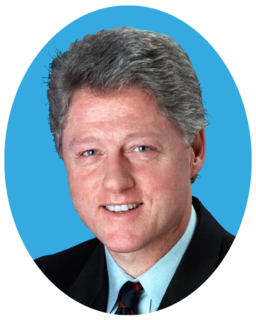
The 1992 National Convention of the U.S. Democratic Party nominated Governor Bill Clinton of Arkansas for President and Senator Al Gore from Tennessee for Vice President; Clinton announced Gore as his running-mate on July 9, 1992. The convention was held at Madison Square Garden in New York City, New York from July 13 to July 16, 1992. The Clinton-Gore ticket then faced and defeated their Republican opponents, President George H. W. Bush and Vice President Dan Quayle as well as the independent ticket of Ross Perot and James Stockdale in the 1992 presidential election.
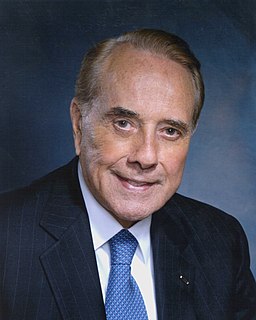
The 1996 Republican presidential primaries were the selection process by which voters of the Republican Party chose its nominee for President of the United States in the 1996 U.S. presidential election. Former Senator Bob Dole of Kansas, former Senate Majority Leader was selected as the nominee through a series of primary elections and caucuses culminating in the 1996 Republican National Convention held from August 12 to August 15, 1996, in San Diego, California.
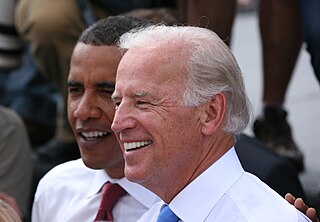
This article lists individuals who were potential Democratic Party candidates for Vice President of the United States in the 2008 presidential election. After Illinois Senator Barack Obama became the Democratic Party's presumptive presidential nominee on June 3, 2008, Obama formed a small committee, made up of James A. Johnson, Eric Holder and Caroline Kennedy, to help him select a running mate. Veteran Democratic lawyer and advisor James "Jim" Hamilton, of the firm Morgan, Lewis & Bockius, later replaced Johnson in vetting candidates.

The 2000 Democratic presidential primaries were the selection process by which voters of the Democratic Party chose its nominee for President of the United States in the 2000 U.S. presidential election. Incumbent Vice President Al Gore was selected as the nominee through a series of primary elections and caucuses culminating in the 2000 Democratic National Convention held from August 14 to 17, 2000, in Los Angeles, California, but he went on to lose the Electoral College in the general election against Governor George W. Bush held on November 7 of that year, despite winning the popular vote by 0.5%.

The 2004 presidential campaign of Bob Graham, senior United States Senator from Florida, began on February 27, 2003 when he filed papers to form an exploratory committee, after delaying his intent to announce on February 3rd due to having heart surgery on January 31. On May 6th, he formally announced his entering into the race for President of the United States in the 2004 election on the Democratic ticket.

This article lists possible candidates for the Republican nomination for Vice President of the United States in the 2012 election. On May 29, 2012, former Governor Mitt Romney of Massachusetts won a majority of pledged delegates for the Republican nomination for President of the United States, and became the presumptive nominee.

The 1992 United States presidential election in Colorado took place on November 3, 1992, as part of the 1992 United States presidential election. Voters chose eight representatives, or electors to the Electoral College, who voted for president and vice president.

The 1992 United States presidential election in Tennessee took place on November 3, 1992, as part of the 1992 United States presidential election. Voters chose eleven representatives, or electors to the Electoral College, who voted for president and vice president.

This article lists those who were potential candidates for the Democratic nomination for Vice President of the United States in the 2000 election. Incumbent Vice President Al Gore won the 2000 Democratic nomination for President of the United States, and chose Connecticut Senator Joseph Lieberman as his running mate on August 7, 2000. Lieberman, a two-term centrist Democratic Senator, was chosen for being "tough on defense" and foreign policy issues. Lieberman was the first Jew chosen for a national ticket. The choice of Lieberman was announced shortly before the 2000 Democratic National Convention. Former Secretary of State Warren Christopher led the vetting process. The Gore-Lieberman ticket ultimately lost to the Bush-Cheney ticket. Coincidental to the presidential election, Lieberman was re-elected to a third term as Senator from Connecticut.
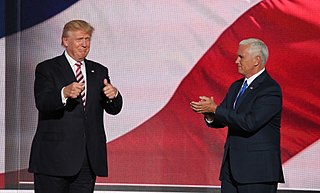
This article lists potential candidates for the Republican nomination for Vice President of the United States in the 2016 United States presidential election. Businessman Donald Trump of New York, the 2016 Republican nominee for President of the United States, considered several prominent Republicans and other individuals before selecting Governor Mike Pence of Indiana as his running mate on July 15, 2016. Pence formally won the vice presidential nomination on July 19, 2016, at the 2016 Republican National Convention. As the Trump-Pence ticket won the 2016 presidential election, Pence became Vice President of the United States on January 20, 2017.

This article lists potential candidates for the Democratic nomination for Vice President of the United States in the 2016 election. Former Secretary of State Hillary Clinton, the 2016 Democratic nominee for President of the United States, chose Senator Tim Kaine of Virginia as her running mate. The formal nomination took place at the 2016 Democratic National Convention. The Clinton-Kaine ticket lost the 2016 presidential election to the Republican Trump-Pence ticket, and Kaine returned to the Senate following the campaign.

This article lists those who were potential candidates for the Democratic nomination for Vice President of the United States in the 1988 election. Massachusetts Governor Michael Dukakis won the 1988 Democratic nomination for President of the United States, and chose Texas Senator Lloyd Bentsen as his running mate. Dukakis chose Bentsen in order to appeal to Southerners and in hopes of carrying Bentsen's home state of Texas. The choice of Bentsen caused some backlash from Jesse Jackson, who had wanted to be chosen as the vice presidential nominee, and progressives such as Ralph Nader. Paul Brountas, a longtime Dukakis aide, led the search for Dukakis's running mate. The Dukakis-Bentsen ticket would lose to the Bush-Quayle ticket in the general election. Coincidental to the presidential election, Bentsen won re-election as senator.

This article lists those who were potential candidates for the Republican nomination for Vice President of the United States in the 1988 election. Incumbent Vice President George H.W. Bush won the 1988 Republican nomination for President of the United States, and chose Indiana Senator Dan Quayle as his running mate. The selection of Quayle surprised many of Bush's closest advisers, who had expected Bush to pick a more well-known running mate. However, Bush adviser Roger Ailes helped convince Bush that Quayle would be able to effectively attack the Democratic presidential nominee, Michael Dukakis. Bush also liked Quayle's youth and felt that Quayle would make for a loyal vice president. The Bush-Quayle ticket ultimately defeated the Dukakis-Bentsen ticket in the 1988 election.
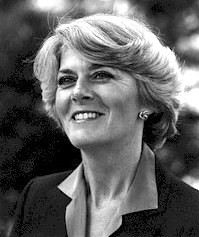
This article lists those who were potential candidates for the Democratic nomination for Vice President of the United States in the 1984 election. Former Vice President Walter Mondale won the 1984 Democratic nomination for President of the United States, and chose New York Representative Geraldine Ferraro as his running mate. Ferraro was the first woman to be a part of a national ticket for a major party. Mondale chose Ferraro in hopes of energizing the base and winning the votes of women, but also because he viewed her as a solid legislator who had won the approval of Speaker Tip O'Neill. John R. Reilly, an attorney and a senior adviser to Mondale, managed the search for a running mate. Mondale seriously considered his major rival for the 1984 presidential nomination, Senator Gary Hart, but Mondale refused to consider a second rival, Jesse Jackson, on the grounds that the differences between their policies were too great. The Mondale-Ferraro ticket ultimately lost to the Reagan-Bush ticket.
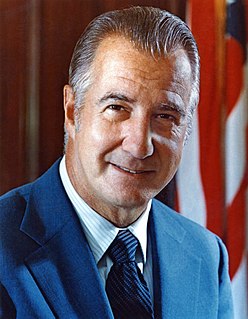
This article lists those who were potential candidates for the Republican nomination for Vice President of the United States in the 1968 election. After winning the Republican presidential nomination at the 1968 Republican National Convention, former Vice President Richard Nixon convened a series of meetings with close advisers and party leaders such as Strom Thurmond in order to choose his running mate. Nixon ultimately asked the convention to nominate Maryland Governor Spiro Agnew as his running mate. By a large margin, Agnew won the vice presidential nomination on the first ballot over Michigan Governor George W. Romney, who was supported by a faction of liberal Republicans. Nixon chose Agnew because he wanted a centrist who was broadly acceptable to the party, had experience with domestic issues, and appealed to Southern voters. The Nixon-Agnew ticket defeated the Humphrey-Muskie ticket, and also won re-election in 1972, defeating the McGovern-Shriver ticket. However, Agnew was forced to resign as Vice President in 1973 due to a controversy regarding his personal taxes.
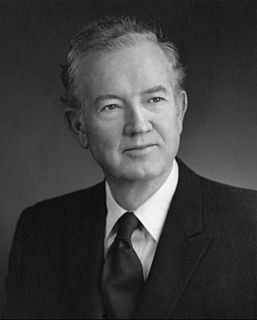
This article lists those who were potential candidates for the Democratic nomination for Vice President of the United States in the 1952 election. After winning the presidential nomination on the third ballot of the 1952 Democratic National Convention, Illinois Governor Adlai Stevenson consulted with Democratic Party leaders such as President Harry S. Truman and Speaker Sam Rayburn. Stevenson chose Alabama Senator John Sparkman, a Southern centrist, as his running mate. Sparkman won the vice presidential nomination on the first ballot as no serious rival tried to displace Stevenson's choice. However, many Northerners were not enthused with the choice of Sparkman due to Sparkman's stance on civil rights. During the 1952 convention, Sparkman, who had supported Senator Richard Russell for president, played a part in watering down the party's platform on civil rights. New York Representative Adam Clayton Powell Jr. and others walked out of the convention after the choice of Sparkman was announced. The Democratic ticket lost the 1952 election to the Republican ticket of Dwight D. Eisenhower and Richard Nixon.






